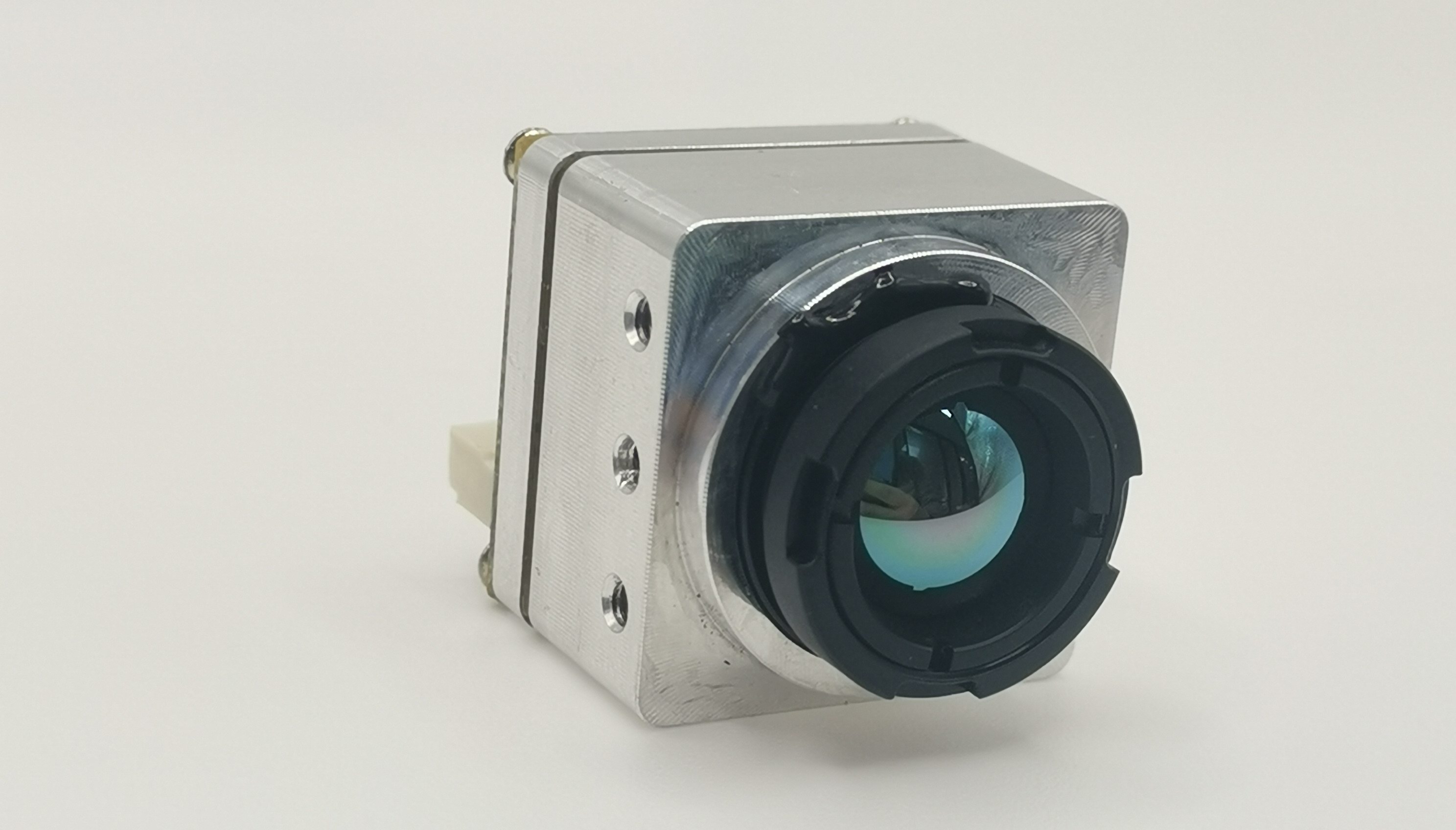Maximizing Drone Capabilities: Using Analog FPV Thermal Cameras

Exploring the Basics
When delving into the world of drone technology, it's essential to understand the fundamental components that contribute to their advanced capabilities. One such crucial element is the integration of analog FPV thermal cameras. These innovative devices play a pivotal role in expanding the functionality of drones, particularly in scenarios where traditional visual imaging falls short.
What Are Analog FPV Thermal Cameras?
Understanding FPV Technology
First and foremost, it's important to grasp the concept of FPV (First Person View) technology. This cutting-edge innovation allows operators to experience flight from the drone's perspective in real-time. By utilizing specialized goggles or monitors, users can immerse themselves in a live feed directly from the drone's onboard camera.
The Role of Thermal Imaging in Drones
Thermal imaging has revolutionized aerial reconnaissance by enabling drones to capture heat signatures emitted by objects and organisms. Unlike conventional cameras that rely on visible light, thermal imaging cameras detect infrared radiation, translating it into vivid representations of temperature differentials within the environment.
Why Use Drones with Thermal Cameras?
The Unique Benefits of Aerial Thermal Imaging
The utilization of thermal imaging cameras equips drones with unparalleled capabilities for detecting heat disparities. This proves invaluable in various applications such as search and rescue missions, wildlife monitoring, and industrial inspections.
How Drones with Thermal Cameras Enhance Observations
By integrating thermal cameras into drones, operators gain access to a wealth of data that would otherwise remain undetected. From identifying hidden hotspots during firefighting operations to pinpointing anomalies in solar panels during maintenance inspections, the enhanced observational prowess provided by drones with thermal cameras is truly transformative.
The Advantages of Thermal Imaging Cameras on Drones
As we delve deeper into the realm of drone technology, it becomes evident that the integration of thermal imaging cameras significantly enhances their capabilities. Let's explore the myriad advantages that these advanced devices offer when mounted on drones.
Enhanced Visibility in Various Conditions
Seeing Through Smoke and Fog
One of the most compelling advantages of thermal imaging cameras on drones is their ability to penetrate through environmental obstructions such as smoke and fog. Traditional visual imaging can be severely impaired in these conditions, hindering critical operations like firefighting and search missions. However, with the aid of thermal cameras, drones can effectively navigate through these impediments, providing clear visibility to operators on the ground.
Nighttime Surveillance Capabilities
In addition to overcoming atmospheric challenges, drones with thermal cameras excel in nocturnal surveillance. The infrared technology empowers drones to capture detailed images even in complete darkness, making them invaluable assets for law enforcement agencies conducting nighttime patrols and security monitoring.
Improved Efficiency and Safety
Conducting Inspections from a Distance
The integration of thermal imaging cameras enables drones to conduct remote inspections with unparalleled efficiency. By capturing thermal data from a distance, these aerial vehicles streamline inspection processes across various sectors such as infrastructure maintenance, power line assessments, and building surveys. This not only expedites the inspection procedures but also minimizes operational downtime.
Minimizing Risks in Hazardous Environments
When deployed in hazardous environments such as industrial facilities or disaster zones, drones with thermal cameras play a pivotal role in risk mitigation. By remotely assessing high-risk areas and identifying potential hazards through thermal imaging, these drones enhance safety protocols by minimizing human exposure to dangerous conditions.
Practical Applications of Drones with Thermal Cameras
As the capabilities of drones continue to expand, their integration with thermal imaging cameras has unlocked a myriad of practical applications across diverse sectors. Let's delve into the tangible benefits and real-world scenarios where these advanced devices prove to be indispensable.
Search and Rescue Operations
Locating Individuals in Difficult Terrains
In challenging landscapes such as dense forests, mountainous regions, or disaster-stricken areas, the use of drones with thermal cameras significantly enhances search and rescue efforts. The thermal imaging capabilities allow these aerial vehicles to detect body heat signatures, enabling swift identification of individuals who may be stranded or injured in remote locations. This technology has been instrumental in expediting search missions and increasing the chances of locating missing persons within expansive terrains.
Nighttime Search Efforts
During nighttime operations, traditional search methods are often impeded by limited visibility. However, thermal imaging cameras equipped on drones mitigate this challenge by providing clear thermal signatures even in darkness. This invaluable feature enables search and rescue teams to extend their operations into the night, maximizing their effectiveness in locating individuals under low-light conditions.
Wildlife Monitoring and Conservation
Tracking Animal Movements
The conservation and protection of wildlife are paramount concerns, and drones with thermal cameras offer a non-intrusive means of monitoring animal populations. By capturing thermal images from above, these drones can track the movements of elusive species without causing disturbance. This capability is particularly beneficial for studying nocturnal animals that are active during nighttime hours when traditional observation methods are impractical.
Preventing Poaching Activities
Illegal poaching poses a significant threat to endangered species, making it crucial to employ effective surveillance measures. Drones equipped with thermal imaging cameras provide conservationists and law enforcement agencies with a powerful tool for detecting poaching activities even under the cover of darkness. The ability to monitor vast wildlife reserves from above enables proactive intervention to safeguard vulnerable animal populations.
Industrial and Agricultural Inspections
Monitoring Crop Health
In agricultural settings, early detection of crop anomalies is vital for optimizing yields and addressing potential issues promptly. Thermal imaging cameras integrated into drones facilitate comprehensive aerial surveys that reveal variations in plant temperatures, indicating areas of concern such as water stress or pest infestations. This data empowers farmers to implement targeted interventions for crop management, ultimately enhancing agricultural productivity.
Inspecting Infrastructure for Maintenance
Infrastructure maintenance demands thorough inspections to identify structural weaknesses or malfunctioning components. With thermal imaging cameras, drones excel in conducting detailed assessments of buildings, bridges, power lines, and other critical infrastructure assets. The ability to capture thermal data from elevated perspectives aids engineers and maintenance personnel in identifying potential issues before they escalate into costly repairs or safety hazards.
Tips for Maximizing Drone Capabilities with Analog FPV Thermal Cameras
As drone technology continues to evolve, it's essential to maximize the capabilities of analog FPV thermal cameras for optimal performance and efficiency. Here are some valuable tips to enhance the utilization of these advanced devices.
Selecting the Right Equipment
Considering Camera Specifications
When integrating thermal imaging cameras into drones, it's crucial to carefully evaluate the specifications of the camera. Factors such as thermal sensitivity, spatial resolution, and frame rate significantly impact the camera's performance in capturing thermal data. Selecting a camera with high thermal sensitivity ensures that even subtle temperature variations are accurately detected, while adequate spatial resolution guarantees clear and detailed thermal images. Additionally, a higher frame rate enables smoother real-time visualization of thermal data during drone operations.
Choosing the Appropriate Drone Model
The compatibility between thermal imaging cameras and drone models is paramount for seamless integration and optimal functionality. Different drones vary in payload capacity, power supply compatibility, and mounting options, all of which influence the suitability for accommodating thermal cameras. It's imperative to select a drone model that not only supports the weight and power requirements of the thermal camera but also offers stability and maneuverability for precise aerial thermography.
Mastering the Art of Thermal Imaging
Understanding Thermal Signatures
To effectively harness the potential of thermal imaging cameras, operators must develop a comprehensive understanding of thermal signatures. Each object or surface emits unique heat patterns that can be indicative of various conditions or anomalies. Familiarizing oneself with typical thermal signatures associated with different materials, structures, or environmental factors enhances the ability to discern relevant information from captured thermal images.
Interpreting Thermal Images Accurately
Accurate interpretation of thermal images is pivotal in extracting meaningful insights from aerial thermography. Operators should be adept at identifying hotspots, cold spots, and temperature differentials within captured images. Moreover, understanding how environmental factors such as solar radiation or wind affect thermal patterns aids in distinguishing genuine anomalies from external influences. Proficiency in interpreting thermal images empowers operators to make informed decisions based on reliable thermal data.
Enhancing Your Drone's Performance
Regular Maintenance Tips
Maintaining both the drone and thermal imaging camera is essential for sustained performance and longevity. Regularly inspecting and cleaning the drone's propellers, motors, and electrical connections ensures operational reliability during flights. Similarly, adhering to manufacturer-recommended maintenance schedules for the thermal camera safeguards its functionality and accuracy over time.
Upgrading for Better Efficiency
As technological advancements continue to unfold in both drone systems and thermographic equipment, periodic upgrades present opportunities to enhance overall efficiency. Upgrading to drones with improved flight stability or longer endurance expands operational capabilities when conducting aerial thermography missions. Likewise, considering advancements in thermal imaging cameras, such as enhanced image processing algorithms or higher spatial resolutions, can elevate the quality and precision of captured thermal data.
Wrapping Up
As we look to the future of drone technology, the integration of thermal imaging capabilities is poised to undergo significant advancements and innovations. Let's explore the emerging trends and technologies that are set to shape the landscape of drones equipped with thermal cameras.
The Future of Drones with Thermal Cameras
Emerging Trends and Technologies
The evolution of thermal imaging drones is anticipated to witness advancements in miniaturization and weight reduction of thermal cameras, enabling seamless integration with a broader range of drone models. Additionally, the development of more sophisticated image processing algorithms promises enhanced real-time analysis and interpretation of thermal data, further augmenting the operational efficiency and utility of these aerial systems.
Moreover, ongoing research in the field of multispectral imaging holds promise for integrating additional sensing modalities alongside thermal cameras, providing comprehensive environmental monitoring capabilities. This holistic approach will enable drones to capture not only thermal signatures but also spectral data across various wavelengths, opening new frontiers in applications such as precision agriculture, ecological studies, and environmental conservation efforts.
The Expanding Scope of Applications
Looking ahead, the scope of applications for drones with thermal cameras is poised to expand across diverse industries and sectors. From infrastructure inspection and precision agriculture to public safety and environmental conservation, these advanced aerial systems are set to play an increasingly pivotal role in addressing complex challenges and enhancing operational capacities.
Final Thoughts
Embracing the Potential of Thermal Imaging Drones
As we embrace the potential of thermal imaging drones, it's essential to recognize their transformative impact on diverse fields ranging from emergency response and environmental conservation to industrial operations. The ability to capture critical thermal data from aerial vantage points empowers decision-makers with invaluable insights for informed action and resource allocation.
Encouraging Responsible Use and Innovation
While celebrating the advancements in thermal imaging drone technology, it's imperative to advocate for responsible use practices that prioritize privacy considerations, ethical wildlife monitoring, and adherence to regulatory guidelines. Furthermore, fostering a culture of innovation through collaborative research initiatives will drive continuous improvement in thermal imaging capabilities, ensuring that these technologies serve societal needs while upholding ethical standards.
In conclusion, as we navigate the ever-evolving landscape of drone technology integrated with thermal imaging capabilities, it's crucial to remain attentive to emerging trends, uphold ethical principles, and harness innovation for sustainable progress.
See Also
Revolutionary Analog FPV Thermal Camera for Drones and Surveillance
Contact Us: Ms. Coco Huang
E-mail: sales@iasun.cn
WhatsApp/Wechat: +86 13510421923

